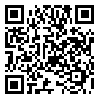Volume 9, Issue 4 (2-2019)
JAP 2019, 9(4): 66-77 |
Back to browse issues page
Download citation:
BibTeX | RIS | EndNote | Medlars | ProCite | Reference Manager | RefWorks
Send citation to:



BibTeX | RIS | EndNote | Medlars | ProCite | Reference Manager | RefWorks
Send citation to:
Valizade Orang A, Jafarnezhadgero A, Ghane G, Ghorbanloo F. The effect of using a knee brace on the ground reaction forces, impulse, loading rate and free moment during landing in athletes with anterior cruciate ligament injuries
. JAP 2019; 9 (4) :66-77
URL: http://jap.iums.ac.ir/article-1-5407-en.html
URL: http://jap.iums.ac.ir/article-1-5407-en.html
1- Department of Physical Education and Sport Sciences, Faculty of Educational Sciences and Psychology, University of Mohaghegh Ardabili, Ardabil, Iran. , Jteymour@gmail.com
2- Department of Physical Education and Sport Sciences, Faculty of Educational Sciences and Psychology, University of Mohaghegh Ardabili, Ardabil, Iran.
2- Department of Physical Education and Sport Sciences, Faculty of Educational Sciences and Psychology, University of Mohaghegh Ardabili, Ardabil, Iran.
Abstract: (3451 Views)
Aims and background: Jumping and landing are common exercises in sports activities which are associated with injury of the anterior cruciate ligament. The purpose of this study was to investigate the effect of using a knee brace on peak ground reaction forces amplitudes, vertical loading rate, impulses in three dimensions and peak free moment values during landing in athletes with anterior cruciate ligament injuries. Materials and methods: 15 athletes with anterior cruciate ligament injuries )height: 1.75±0.02 m; weight: 70.00±6.54 kg; body mass index: 23.29 kg / m2) volunteered to participate in this study. The landing height was 30 cm. The 50K30 Xeleton knee brace was used to support the anterior cruciate ligament and Kistler force plates were used to record landing ground reaction forces. Findings: The results did not show any significant difference during the landing from a height of 30 cm with and without knee braces )P<0.05) in peak ground reaction force components and the time to peaking of ground reaction forces along the vertical, anterior-posterior, and medio-lateral directions. Also, the findings did not show any significant differences in loading rate, impulse and free moment during landing with a brace compared to landing without it )P<0.05). Conclusion: According to the results of this study, it can be concluded that using a brace in patients with anterior cruciate ligament injury did not have any significant effect on the improvement of ground reaction forces, free moment, impulse and loading rate values during landing. It is also suggested that in future studies, the effect of wearing a brace long term on these components should be considered.
Type of Study: Original |
Subject:
Chronic pain managment
Received: 2018.09.3 | Accepted: 2018.11.28 | Published: 2019.02.15
Received: 2018.09.3 | Accepted: 2018.11.28 | Published: 2019.02.15
Send email to the article author
| Rights and permissions | |
 |
This work is licensed under a Creative Commons Attribution-NonCommercial 4.0 International License. |





